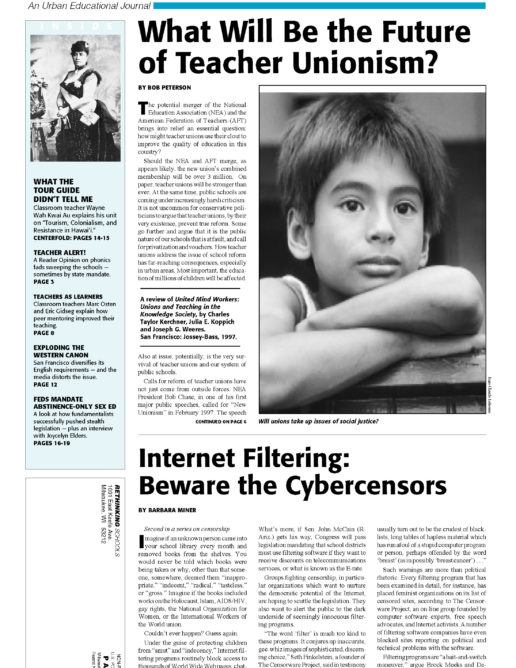The History of Sexuality Education
The 1960s saw the beginning of the current wave of controversy over sex ed in U.S. schools. But as early as 1912, the National Education Association called for teacher training programs in sexuality education.
In 1940, the U.S. Public Health Service strongly advocated sexuality education in the schools, labeling it an “urgent need.” In 1953, the American School Health Association launched a nationwide program in family life education. Two years later, the American Medical Association, in conjunction with the NEA, published five pamphlets that were commonly referred to as “the sex education series” for schools.
Support for sexuality education among public health officials and educators did not sway opponents, however. And for the last 30 years, battles have raged between conservatives and health advocates over the merits — and format — of sexuality education in public schools.
The first wave of organized opposition, from the late 1960s to the early 1980s, took the form of attacks aimed at barring any form of sex ed in school. Sex education programs were described by the Christian Crusade and other conservative groups as “smut” and “raw sex.” The John Birch Society termed the effort to teach about sexuality “a filthy Communist plot.” Phyllis Schlafly, leader of the far-right Eagle Forum, argued that sexuality education resulted in an increase in sexual activity among teens.
Efforts to curtail sex ed enjoyed only limited success, however. Sex education programs in public schools proliferated, in large part due to newly emerging evidence that such programs didn’t promote sex but in fact helped delay sexual activity and reduce teen pregnancy rates.
By 1983, sexuality education was being taught within the context of more comprehensive family life education programs or human growth and development courses. Such an approach emphasized not only reproduction, but also the importance of self-esteem, responsibility, and decision making. The new courses covered not only contraception, but also topics such as family finances and parenting skills.
In the mid 1980s, the AIDS epidemic irrevocably changed sexuality education. In 1986, U.S. Surgeon General C. Everett Koop issued a report calling for comprehensive AIDS and sexuality education in public schools, beginning as early as the third grade. “There is now no doubt that we need sex education in schools and that it [should] include information on heterosexual and homosexual relationships,” Koop wrote in his report. “The need is critical and the price of neglect is high.”
But if Koop’s report helped promote sexuality education, it also forced the Religious Right to rethink its opposition strategies. Even the most conservative of sex-ed opponents now found it difficult to justify a total ban on the topic. Instead, the Right responded with a new tactic: fear-based, abstinence-only sexuality education.

